The stability of your car and its smooth handling can all be attributed to the stabilizer. The main component of this is the stabilizer bar links. But what is a stabilizer bar link?
The stabilizer bar link is an essential part of the stabilizer. It helps improve shock absorption and the overall handling of the vehicle. It prevents your car from swaying excessively on curves, sharp corners, and large bumps.
The stabilizer is attached to the body of your car using a body mount with stabilizer bar links and stabilizer bar bushings. The links connect to the front suspension’s lower control arm. There are bushings along with the link that will result in a smooth and safe ride.
Read on to learn more about the stabilizer bar link.
Stabilizer Bar Link – What It Is and Its Purpose
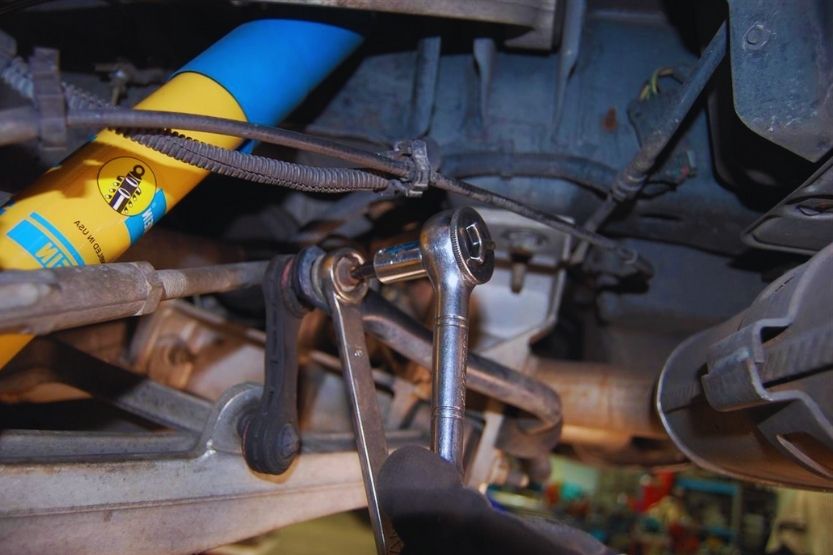
The stabilizer bar link is a vital part of the stabilizer. It enhances shock absorption and overall handling of the vehicle. It prevents your car from swaying excessively on sharp corners, curves, and large bumps.
The stabilizer is attached to the vehicle’s body using a body mount with stabilizer bar links and stabilizer bar bushings. The links connect to the front suspension’s lower control arm. Then, there are bushings along with the link that will result in a smooth and safe ride.
What Is a Stabilizer Bar System
Forms Part of the Vehicle’s Suspension Systems
The stabilizer bar system forms part of the suspension systems of vehicles. Its role is to minimize body roll and fine-tune the suspension. It connects the front and rear wheels using short links. These links are then attached to a suspension component at each wheel.
Stabilizer Bars Are Also Called Sway Bars or Anti-sway Bars
In some cases, stabilizer bars are called sway bars or anti-sway bars. Others call it roll bars or anti-roll bars.
Stabilizer Bar System Components
A stabilizer bar system features several components. Aside from the stabilizer bar itself, it also includes the following:
- Bushing brackets,
- Links,
- Stabilizer bar to vehicle frame bushings, and
- Stabilizer link bushings or sockets.
These, and all its other components, are designed to help your vehicle adjust over large bumps, sharp corners, and curves.
What Is a Stabilizer Link
Essential Component of Automotive Suspensions
The stabilizer link serves as an essential component of automotive suspensions. Stabilizer links connect several parts to help address issues you encounter every time you pass over potholes and all other road imperfections.
What Does a Sway Bar Link Look Like
It is not difficult to figure out which is the sway bar link in your car. Find the ball-jointed metal connections next to your car’s wheels. Some mechanics call them ball joints. Sway bar links typically measure about 10 to 15 inches.
Stabilizer Link Function
Segmented suspensions are used in modern cars, and stabilizers feature stabilizer links. A stabilizer bar holds pairs of wheels and keeps them connected. It is hooked by stabilizer links in which the arms follow the movement of the wheels. Turning and suspension travel are possible through ball joint connections.
Since the stabilizer bar holds pairs of wheels, a front stabilizer link and a rear stabilizer link exist. In essence, all stabilizer links serve a similar purpose.
Is Stabilizer Link Important
Yes, stabilizer links are vital as it helps improve shock absorption and handling. They prevent your vehicle from overly swaying or rocking, particularly when passing over potholes, on sharp corners, and curves.
Stabilizer links help refine the process of control. It allows you to have a smooth and safe ride.
Are Stabilizer Links Durable
Stabilizer links are durable because they have to be. We all know that road imperfections are very common. In which case, your car’s suspension system has to be able to withstand shocks resulting from diverse driving conditions.
That’s why stabilizer links are made of cast iron, steel, and alloy. Most sway bar links also have at least one ball joint to connect with adjacent suspension components efficiently. There are, however, sway bar links that do not have ball joints which can typically be found in Japanese and European vehicles.
What Is the Impact of Sway Bar Link on Vehicle Performance
If your car’s stabilizer links wear out, it will undoubtedly affect fuel efficiency, ride, and steering. You would know if the sway links are worn out as you will hear screeching or creaking noises. This occurs every time you pass over potholes or large bumps or when you are turning on sharp corners or curves.
Make sure not to ignore the screeching or creaking noises you hear. Address the issue immediately because damaged stabilizer links can result in loss of control. Sadly, it can lead to road accidents.
Again, what does a stabilizer bar link do? A sway or stabilizer bar provides your car stability so that it won’t lean too much every time you make a turn. The stabilizer link connects the sway bar’s outer end to the car’s suspension component. Usually, a stabilizer bar link contains two small ball joints at each end.
Is It Costly to Repair Stabilizer Links
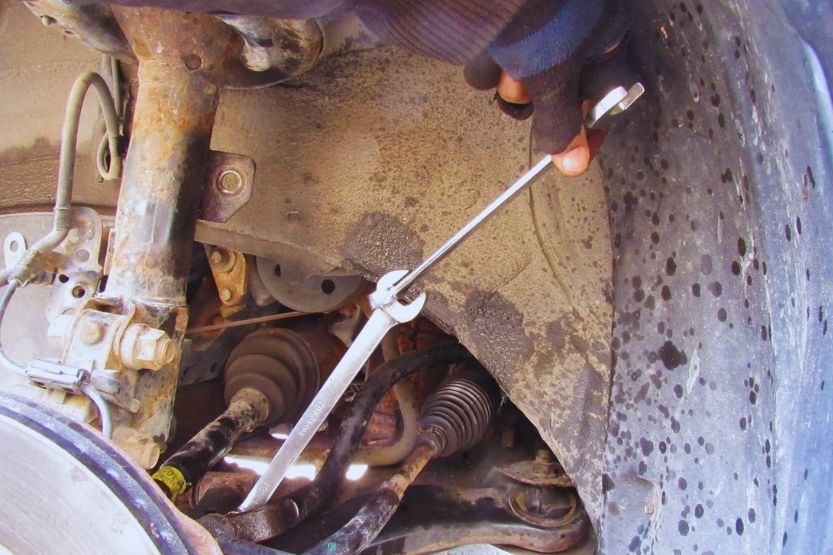
You need specialty tools to repair stabilizer links. If you need to replace two sway bar links on a domestic vehicle, the cost will approximately be between $120 and $160 at a budget repair shop.
The cost of a sway bar link ranges between $40 and $110. At the same time, the labor will most likely cost you between $50 and $70.
For convenience, you can check out the Stabilizer Bar Link Kits available on Amazon. They are inexpensive yet durable. Two of the recommended ones are the following:
- MOOG Steering and Suspension K750289 Stabilizer Bar Link
- MOOG K750415 Stabilizer Bar Link
Let me briefly talk about these two products:
1. MOOG Steering and Suspension K750289 Stabilizer Bar Link
Click here to see it on Amazon.
Features Wrench Flats
The MOOG Steering and Suspension K750289 Stabilizer Bar Link are easy to install. It features wrench flats for convenient installation and removal. Also, it has a socket you can grease; it is made of premium materials, and it was subjected to rigorous testing to ensure its strength and durability.
Durable
Those who have already tried this product have nothing but praises for it. They love the fact that you can grease it and that it impressively works like the original part. An Amazon customer even said it is way more durable than the Original Equipment Manufacturer (OEM) sway bar link kits.
2. MOOG K750415 Stabilizer Bar Link
Click here to see it on Amazon.
Easy to Install
The K750415 Stabilizer Bar Link is also from MOOG. Similar to the MOOG Steering and Suspension K750289 Stabilizer Bar Link, it is also easy to install. It also has a greasable socket, and it is made of premium quality material. It underwent comprehensive testing to ensure its strength and durability.
High-quality
Similar to your car’s original sway bar link, the K750415 Stabilizer Bar Link will perfectly fit and work as it should. It is thick, and you will instantly know that it has a high quality. You will get good value for your money.
What Does Stabilizer Bar Link Do
Keeps Car Stable When Passing Over Large Bumps
A stabilizer bar, or sway bar, keeps your car stable when passing over large bumps or driving in turns. It also keeps the car body from leaning too much.
Front and Rear Stabilizer Link
Most of the time, vehicles have one stabilizer bar in the front and another in the rear suspension. Suffice to say that there is also a front stabilizer link and a rear stabilizer link.
Cars With Stabilizer Bar Only in the Front Suspension
There are, however, vehicles that only have a stabilizer bar in the front suspension. As for sports cars, they typically have thicker sway bars to ensure stability and safety when cornering.
The stabilizer bar link, or the sway bar link, attaches the outer ends of the sway bar to the suspension component. Most of the time, stabilizer links have two small ball joints at opposite ends.
What Are the Symptoms of Bad Stabilizer Links
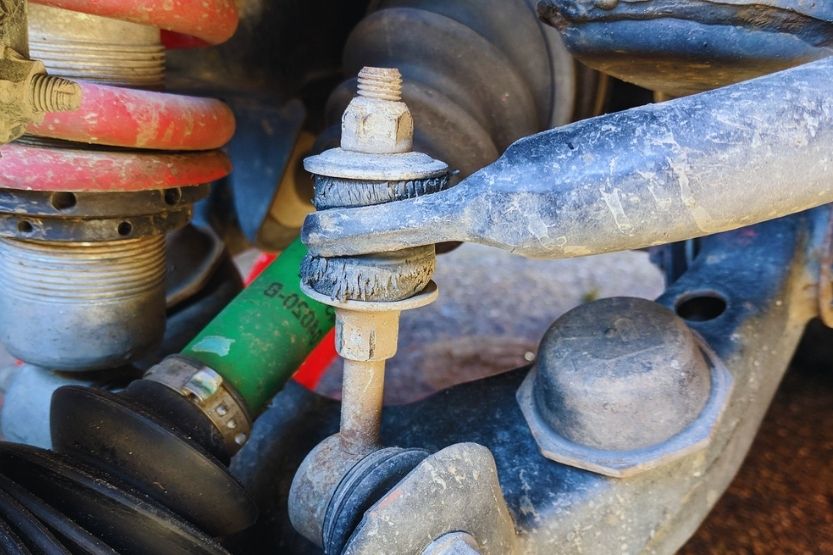
A damaged or worn-out stabilizer link has warning signs which you have to take note of. These include squeaks and clunks. If you notice that you excessively lean through turns, it is also a symptom of bad stabilizer links. Also, if there is noticeably over steering, check the sway bar links immediately.
However, it is also important to note that these symptoms may mean other suspension system problems. That’s why you should not ignore it, as it can lead to more severe suspension issues.
Can You Drive with Bad Stabilizer Links
If you notice symptoms of bad sway bar links for the first time, you can continue driving your vehicle. However, you must drive with caution. As earlier mentioned, it can lead to loss of control. Or, worse, it can lead to road accidents.
If you are in the middle of the road when you notice the symptoms, do not attempt to drive at high speeds. Stay in the slow lane and drive with utmost care.
Can I Drive Without Stabilizer Bar Link
Can you drive without a sway bar link? No. For sure, your car will still start, and you can still make it move. But driving with a worn-out stabilizer bar link is already dangerous in itself. In which case, driving without one is even more dangerous.
If you drive your car without a sway bar link, it will not steer correctly. Stabilizer bar links are meant to stabilize your car when in motion, particularly when you are taking turns and driving at high speeds.
How Long Do Sway Bar Links Last
The overall lifespan of a sway bar link typically ranges between four and five years. But if you consistently drive with the utmost care, it can last even longer. This means you don’t encounter too many sharp curves, and you rarely pass over potholes or large bumps. Also, if you do not drive at high speeds, your sway bar links will most likely last long.
In essence, if the suspension system is not abused, you will most likely not encounter any suspension issues in general.
Do You Need Alignment after Replacing Sway Bar Links
If you are wondering if alignment is required after replacing sway bar links, the answer is no. Alignment is not necessary after the installation of the sway bar and sway bar links.
Is It Hard to Replace Sway Bar Links
If you have experience in fixing cars, replacing sway bar links would be easy for you. It is a repair process that will require you a few basic tools.
However, if you do not have access to the correct tools, you can seek assistance from a professional mechanic. Undoubtedly, they will be able to replace your car’s stabilizer bar links efficiently.
Can a Broken Stabilizer Bar Cause Vibration?
A broken stabilizer bar does not result in vibrations. Maybe, it can transmit them, but vibration is not caused by a damaged stabilizer bar.
How Tight Should Stabilizer Bar Links Be
Tightening the stabilizer bar link only requires light torque, which weighs between 10 and 20 ft-lbs. So, you have to use caution when tightening them.
Use a combination wrench to tighten the sway bar link nut. The wrench should efficiently hold the socket, the torque wrench, and the bolt head as you tighten the nut.
Conclusion – Stabilizer Bar Link FAQs [All About Stabilizer Links]
The stabilizer bar link is a vital part of the stabilizer. It enhances shock absorption and overall handling of the vehicle. It prevents your car from swaying excessively on sharp corners, curves, and large bumps.
As soon as your car shows symptoms of broken stabilizer bar links, make sure not to ignore it. Address the issue immediately to prevent further damage to your car or, most importantly, prevent road accidents.
Related reading:
Mevotech Vs Moog – Which Is Better?
CV Axle Replacement, Cost to Replace, Symptoms and Puller Tools




![Butyl Tape [What Is It and Its Uses?] butyl tape](https://roadsumo.com/wp-content/uploads/2021/06/butyl-tape-150x150.jpg)

![Best Fuel Stabilizer [10 Top Stabilizers] best fuel stabilizer](https://roadsumo.com/wp-content/uploads/2022/01/best-fuel-stabilizer-150x150.jpg)
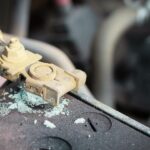
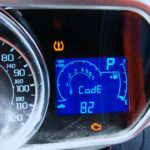
![Check Engine Light On and Off Intermittently [Causes and Fixes] check engine light on and off](https://roadsumo.com/wp-content/uploads/2021/06/check-engine-light-on-and-off-150x150.jpg)
![Read more about the article Valve Lapping [What Is It and How to Lap Valves?]](https://roadsumo.com/wp-content/uploads/2021/01/valve-lapping-300x200.jpg)
![Read more about the article Blue Headlights [Legal? Dangerous? Which Are Best?]](https://roadsumo.com/wp-content/uploads/2022/06/blue-headlights-300x200.jpg)
![Read more about the article AutoZone Services and Prices [Full List]](https://roadsumo.com/wp-content/uploads/2022/10/Autozone-services-and-prices-300x200.jpg)